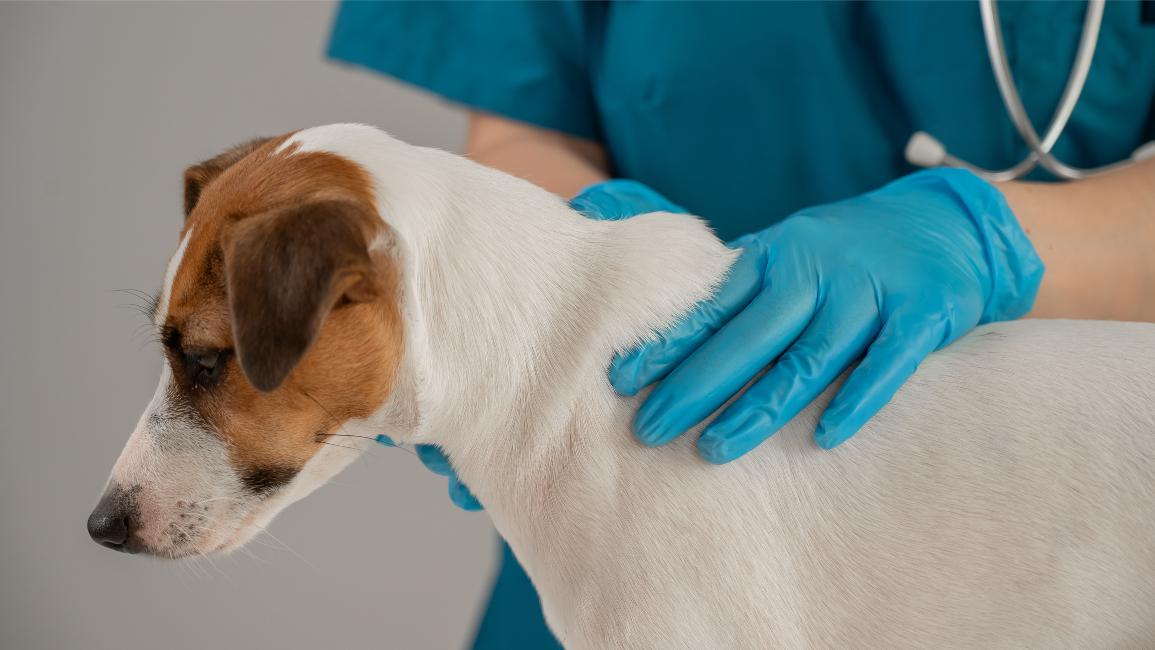Identifying Masses, Lumps, and Bumps on Your Pet
At Volunteer Veterinary Hospital, we understand how stressful it can be to find a lump on your pet. Not all masses, lumps, and bumps are created equal, and checking and monitoring them are an important part of pet wellness.
While it is not possible to tell many different masses apart just by looking, there are definitely some things that you can do to determine what a new lump might be and how much to worry about it. Keep reading to learn some helpful tips about pet masses, lumps, and bumps.
What Could it Be?
Lumps and bumps on our pet patients can be many things. Sometimes it is simply a tick taking a meal (look for the legs!) or even a mat in the fur. Other times a lump or bump is part of the pet.
Some of the more common possibilities include:
- An infection—Sometimes when an infection occurs, the body’s response is to form a pocket of puss. White blood cells, bacteria, and other debris can form a swelling that may be a small pimple-like lesion in the case of a superficial skin infection, or even baseball sized in the case of the formation of an abscess after a puncture wound occurs. Infected areas are often warm, red, and painful.
- Reaction to something foreign—If the body can’t get rid of something that doesn’t belong, it may form granuloma. A granuloma is an inflamed wall of tissue that envelopes the offending thing. Common causes of granulomas include fungal infections, parasites, or the presence of foreign material like a plant awn.
- Neoplasia—Cells may divide abnormally, leading to a neoplastic growth. Masses like this can be benign (a cyst is a good example) or malignant and aggressive.
- Lymph nodes—Dogs and cats have lymph nodes just like people, and their lymph nodes may enlarge in the face of infection or inflammatory conditions like systemic disease. The most common lymph nodes that people identify are under the jaw. Enlarged lymph nodes are typically firm and attached to the underlying tissues. They also exist in pairs, and while one being enlarged doesn’t necessarily mean the same one on the opposite side will be, many times it is.
When to Be Worried
Masses and lumps can be no big deal, aggressive cancer, or just about anything in between. So when do you need to worry?
In general, because looks can be deceiving, our veterinarians should check out any new growth, but it is not an emergency.
You do not want to wait too long to have us check out masses, lumps, or bumps, though, that are:
- Noticeably growing or changing
- Very firm
- Painful to the touch
- Red or irritated
- On a short-haired breed like a pug, pit bull, or boxer that are prone to tumors
Call us for an appointment right away if you have concerns. It is never wrong to have a new or concerning mass checked out.
Diagnosing Masses and Lumps in Pets
Even as veterinarians, we can’t just look at lumps and bumps and always know what they are. There are certainly very aggressive types of tumors like mast cell tumors that can look like just about anything. There are also some pretty benign lesions like a ruptured cyst that can be pretty ugly.
We can definitely gain information during your pet’s physical examination. The location, attachment, overall feel, and behavior of nearby lymph nodes can provide clues about the area.
We might also recommend a fine needle aspirate. During this diagnostic test, we use a needle to collect cells from the area of interest. These cells are then examined under a microscope. In some cases, this information can tell us what type of growth your pet may have and whether surgical removal is necessary.
Sometimes we might recommend surgically removing masses or lumps due to their location or other characteristics. Most growths on the eyelid are benign, for instance, but they can be quite uncomfortable.
When a lump is removed or a surgical biopsy taken, histopathology is typically recommended. Histopathology involves the tissue being sent to a pathologist who examines the tissue microscopically. This provides more accurate information about the type of growth, how it is likely to behave, whether it is likely to return, what further treatment may be recommended, and overall prognosis.
Please let us know if your pet has new or concerning lumps or masses when you visit for your pet’s wellness examinations. Don’t hesitate to contact us if you have concerns before that, either. While your pet’s lumps may not always be cancerous, if they are, early intervention can make a big difference when it comes to outcome.


